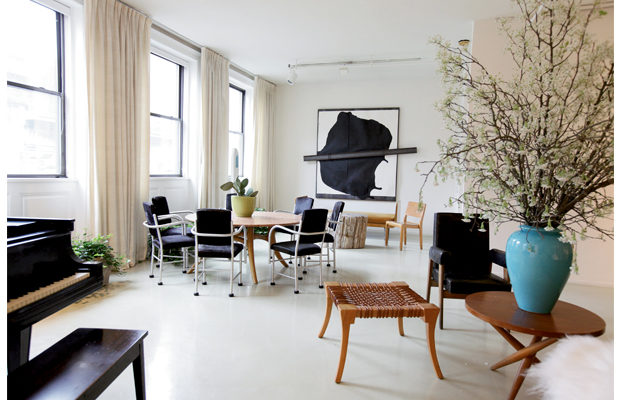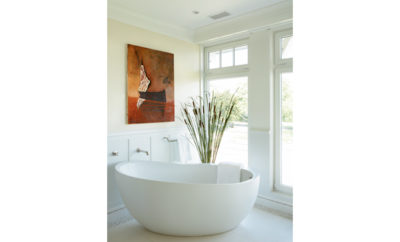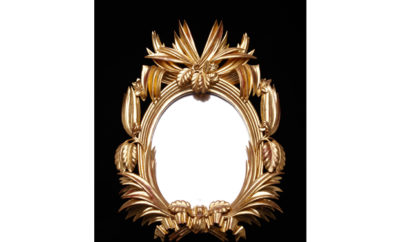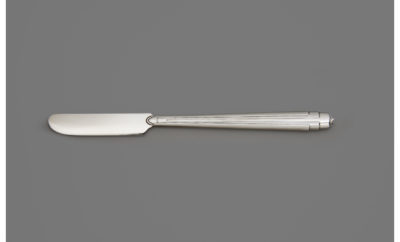
Feature
The Artful Lodger

The main room in John Cheim’s New York loft is frequently used for post-gallery-opening receptions, and contains several gathering areas. These include, in the forefront, a T. H. Robsjohn-Gibbings stool and tri-leg side table and a Pierre Jeanneret armchair.
The Artful Lodger
A New York gallerist’s loft offers an idiosyncratic example of how to live with art and design
John Cheim brings his work home with him—which makes him a fortunate man indeed. Fortunate because Cheim is co-principal of Cheim & Read, one of the numerous tony modern and contemporary art galleries that have transformed the western-most margins of Manhattan’s Chelsea neighborhood, where the avenues reach double digits, from an area once best known for auto-body shops, dive bars, warehouses—and a dreaded NYPD impound lot—into a cultural mecca.
Among dealers, Cheim & Read—now more than ten years in Chelsea, and situated in an immense space that was formerly a garage—is in the uppermost tier. They represent artists as prestigious as Joan Mitchell, Louise Bourgeois, Jenny Holzer, Jack Pierson, William Eggleston, and Alice Neel, along with Jannis Kounellis, Bill Jensen, Hans Hartung, and Lynda Benglis. Cheim, according to his moods, often brings examples of his gallery’s offerings to his loft apartment a few blocks east of his showroom, where he displays the works alongside pieces in his personal collection. This practice is not only a matter of safekeeping, but also a way to demonstrate to potential buyers how paintings and sculptures will comport themselves in a domestic environment.
In Cheim’s case, that environment has an odd—but oddly alluring—decor blending several modernist styles of furnishings. There’s nothing prepossessing about the building, exactly. The ground floor entry hall has racks for bicycles, and the elevator is notable only for its size—conveniently large enough to hold a pair of big shipping crates. But when you enter Cheim’s loft, the atmosphere changes. The main, high ceilinged L-shaped room is painted on both the walls and floors in white—much like the interior of an art gallery. This is another indicator of the way Cheim takes his work home: the space is regularly used to host post-opening gatherings. The layout of the main room, is, you can only say, artistic. One end is anchored by a large, dramatic wall-mounted Kounellis assemblage made on a paper-topped iron base. Upon this matrix, the artist applied a free-form layer of tar, and then used metal staples to attach an iron I-beam across the center of the composition. The main object placed on the opposite side of the space from this work is a classic black Steinway baby-grand piano.
Between and beside these aesthetic and, perhaps, cultural polar opposites, Cheim has arranged several seating areas clearly meant for the comfort of large groups. In these, too, he chose unusual pairings. One is a T.H. Robsjohn-Gibbings walnut table with elegantly flared legs surrounded, almost perversely, by a set of the severe steel-tube machine age armchairs designed by Warren McArthur. (Nearby stands one of Bourgeois’s slender, totemic white-painted bronze sculptures of the late 1940s.) Another grouping includes a Jean Royère limed-oak table and chairs from the 1960s, and another a large round table designed by Florence Knoll, originally for use as a conference table at a Wall Street law firm.
Amongst these pieces is a tri-leg table by Robsjohn-Gibbings—atop which stands a large vase holding a lavish spray of blossoms—and a stool with a webbed leather-strap seat, part of the famed series Robsjohn-Gibbings based on the furniture depicted on ancient Attic ceram ics. Along the walls hang buoyant, colorful abstracts by Hartung, Jensen, Juan Uslé, and Ryan Sullivan, as well as a primordial wall-mounted sculpture by Benglis. The mix of art and objects is strange, yet all come together to create an ambiance of relaxed refinement.
In another area Cheim has devised a more private and intimate space, one that serves as both proper living room and dining area, and where the walls are painted in a minkish gray. Here, the artworks are fewer but more dramatic, and the furnishings are much more lush and even sybaritic. The latter centers on a large sectional sofa, likely from the 1970s, that has been pieced together to surround a 1950s biomorphic wooden coffee table. To the side of this grouping is a set of dining table and chairs. A knotted Bourgeois bronze stands on a pedestal, and on the walls hang a sexy acrylic-on-linen of a woman by Jack Pierson, a large abstract with a pink background by Jonathan Lasker, and a portrait of a male by Alice Neel that could be a demonstrative example of all her work.
But the most intimate room in Cheim’s loft is his bedroom. No: not because it is a bedroom (it also serves as his home office), but because it is in that space that he keeps his personal favorite artistic treasures. Along one wall he has built shelves that support nearly a score of works—mainly drawings and photos—that are particularly dear to him. They include pieces by Jean-Michel Basquiat, Bourgeois, George Condo, Yayoi Kusama, and Lucian Freud. Each night he goes to sleep and each morning he wakes up to these masterpieces. Maybe there is something good to be said, after all, about taking your work home.












